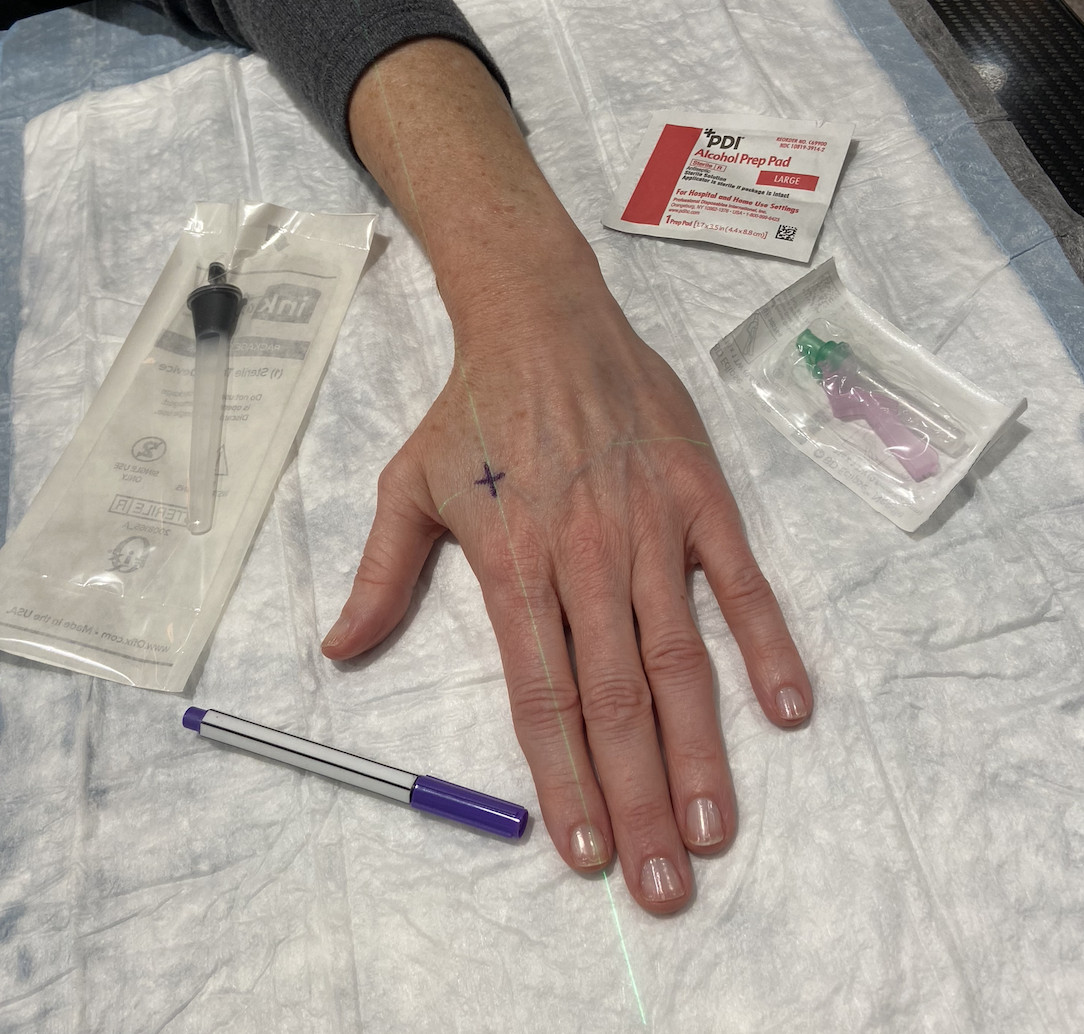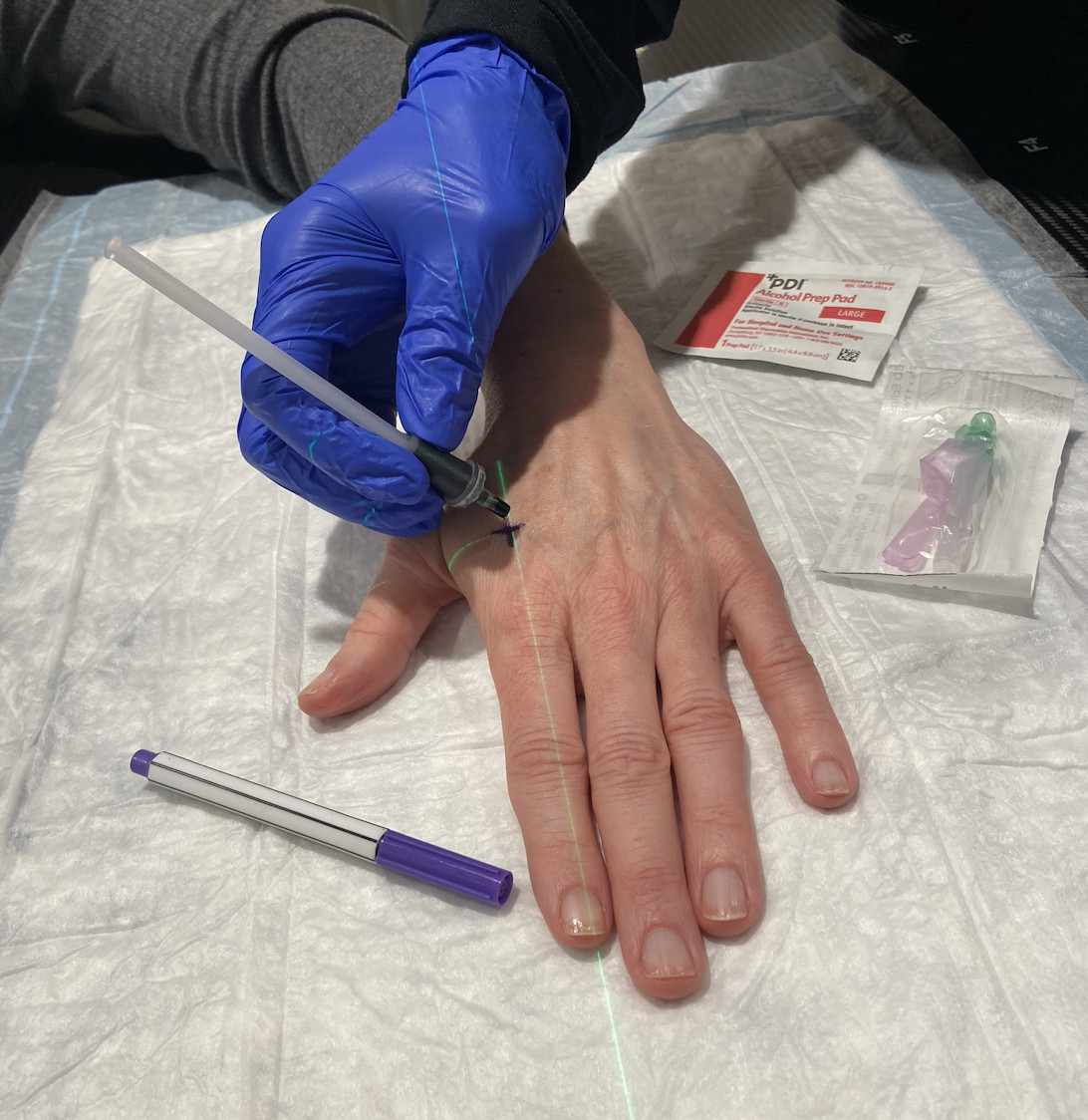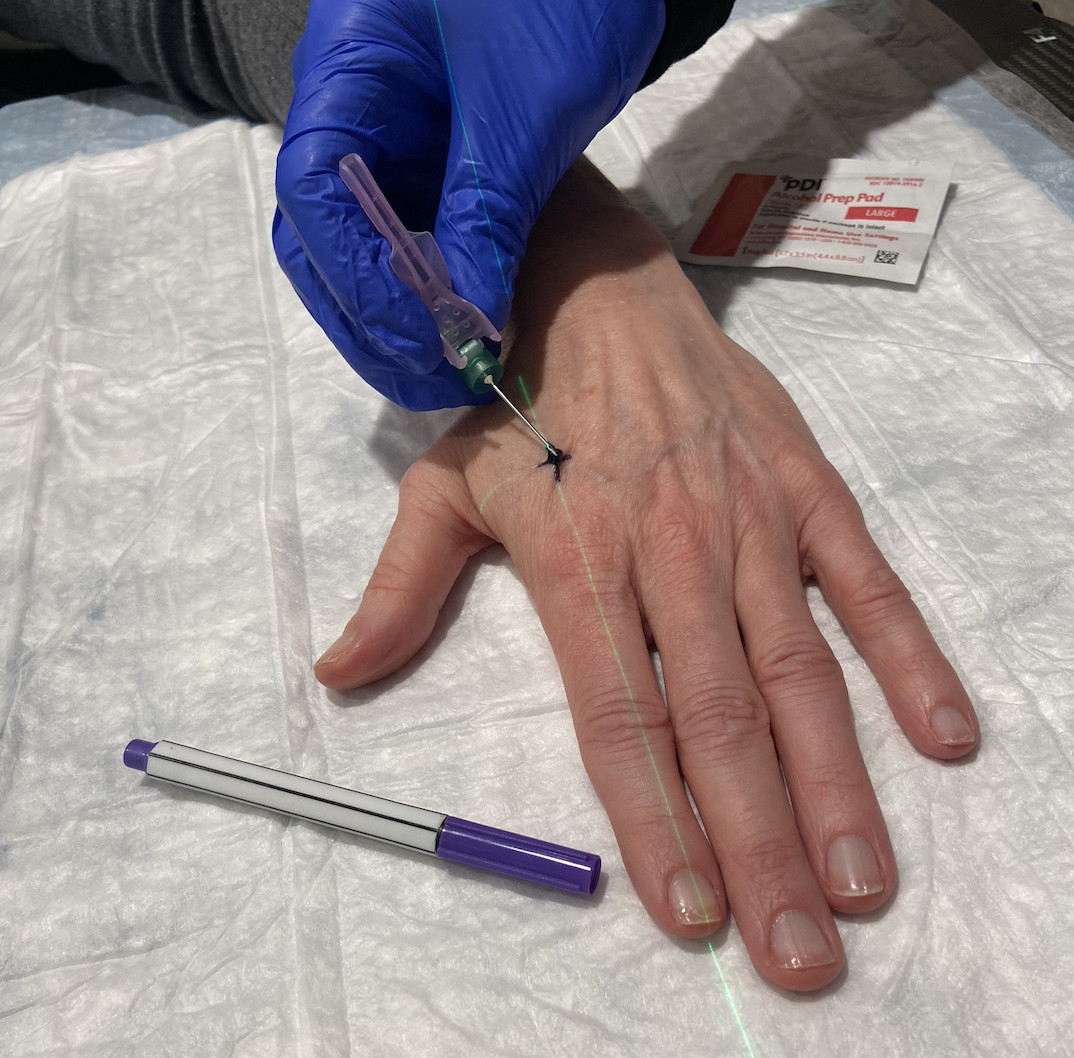Radiation therapy is a crucial part of cancer treatment for many, and it’s a process that demands precision. Before you begin radiation treatments, your medical team will conduct a “simulation,” a planning session to tailor the therapy to your specific needs. During this simulation, you might notice the radiation team making marks on your skin. These aren’t just temporary markers; they are small, permanent tattoos, often referred to as Radiation Tattoos. These tattoos are essential for ensuring you are positioned correctly for each and every radiation treatment session.
The Vital Role of Radiation Tattoos in Cancer Treatment
Radiation tattoos play a critical role in the accuracy of your cancer treatment. Imagine needing to recreate the exact same body position, day after day, for weeks. These tiny tattoos act as permanent reference points, guiding therapists to align you precisely for each radiation dose. In some treatments, particularly breast radiation, tattoos may outline the treatment area, placed strategically at each corner of the field. Other times, they work with lasers to ensure your body is perfectly aligned on the treatment table. Even when the tattoo placement isn’t directly on the treatment site, they are indispensable for correct setup and consistent radiation delivery.
What to Expect: Appearance and Types of Radiation Tattoos
If you’re wondering what these tattoos look like, picture a very small freckle or pinpoint. Radiation tattoos are intentionally discreet. They are typically created using India ink, which results in a blue or black dot, or with black light responsive ink, which might appear pinkish on the skin but becomes more visible under UV light. The choice of ink depends on the clinic’s protocol and sometimes the visibility preference. Often, these tattoos are placed in locations that are easily covered by clothing, minimizing any cosmetic concerns post-treatment.
The Tattooing Procedure: Quick and Minimal Discomfort
The process of getting a radiation tattoo is very quick. It involves placing a tiny droplet of ink onto your skin and then using a fine needle to gently prick the skin. Patients often describe the sensation as a slight pinch, similar to a mosquito bite. While it might be momentarily uncomfortable, the feeling fades quickly. The needle only penetrates the very top layers of skin, much like a cosmetic tattoo, ensuring the mark is permanent but not deeply invasive.
Number and Placement of Your Radiation Tattoos
Typically, you can expect to receive between one and four radiation tattoos. However, the exact number can vary depending on the complexity of your treatment plan. In some cases, more tattoos might be necessary, particularly if multiple areas of your body are being treated or if your treatment plan undergoes adjustments. Occasionally, a second set of tattoos might be needed as treatment progresses. Your radiation therapy team will explain the placement and number of tattoos specific to your situation.
Why Radiation Tattoos Are Permanent and Beneficial
The permanence of radiation tattoos is a deliberate and beneficial aspect of your treatment. Because these marks are permanent, you don’t have to worry about them fading or washing away during your daily routine, such as showering or bathing. This ensures treatment accuracy throughout your entire course of radiation therapy. Furthermore, these tattoos serve as a lasting record of your treatment history. Should you require radiation therapy again in the future, these tattoos provide valuable information to your medical team about previous treatment areas.
Are There Alternatives to Radiation Tattoos?
While radiation tattoos are standard practice, there are situations where they might not be used. If you have cultural or religious beliefs that conflict with tattoos, or if you are concerned about the psychosocial impact of permanent marks, it’s important to discuss these concerns with your healthcare provider. In rare instances, alternative marking methods might be considered. Open communication with your radiation therapy team is key to addressing any concerns and exploring available options.
 While on the CT simulation machine, laser beams are used to mark the treatment area with a marker.
While on the CT simulation machine, laser beams are used to mark the treatment area with a marker.
 Supplies for tattooing. The area is first cleaned with alcohol.
Supplies for tattooing. The area is first cleaned with alcohol.
 A drop of ink is placed on the mark.
A drop of ink is placed on the mark.
 A needle is used to prick the top layers of the skin, getting the ink under the skin and creating the tattoo.
A needle is used to prick the top layers of the skin, getting the ink under the skin and creating the tattoo.

